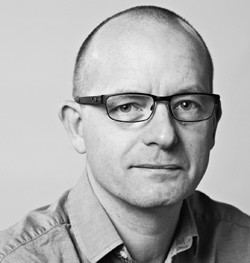The good and seductive narrative belongs around the lunch table, in the popular press and the anecdotal evidence presented by alternative medicine. But does it belong in science as well?

Photo: Einar Nilsen
«Research is not truth, but narratives.» This statement was made by Christine Laine, Editor-in-Chief of Annals of Internal Medicine, in an interview in the Journal of the Norwegian Medical Association in 2013 (1). Traditionally, the narrative is regarded as a somewhat inferior form of communication that uses inductive logic, in which the conclusion does not follow from necessity and conclusions are drawn from the particular to the general. The ideal of scientific communication is the opposite and deductive in nature, since the scientist seeks to draw generally valid conclusions from independent facts. If the premises are true, the conclusion must also be true. The inductive logic of the narrative, on the other hand, may be seductive, but it rests on feet of clay.
Nevertheless, narratives establish meaning and coherence in a complex world. This is why we are attracted to good narratives, scientific narratives included. A new research finding must be not only the result of solid scientific methodology and amenable to verification in order to be accepted, it must also provide meaning and coherence. Therefore, a good academic article must also present a narrative that places this finding in a wider context and persuades the reader to accept that sure, this might have some sense to it. In other words: the deductive power of objective findings can be conferred with additional importance by the use of narrative elements (2).
Roald Hoffmann, Nobel Prize laureate in chemistry, has similarly argued that the narrative power of academic articles can be seen as a «pleasing principle» when research findings have none of the immediate attractiveness and simplicity that we like them to have (3). In fact, it is rare that science produces universal truths. More often, it produces temporary and context-dependent results with limited external validity (4). Science therefore needs interpretation in the form of a narrative that frames the results and imbues them with meaning.
However, scientific narratives can also be misused. One such example is provided by the myth about serotonin and depression, as described by David Healey in an (elegantly narrated) editorial in the BMJ (5). This is the story of how the exceptionally poorly founded narrative of how depression is «caused» by insufficient levels of serotonin gradually gained ground, first among the patient’s organisations, then in the general public, and how it later was used to bolster the myth that selective serotonin reuptake inhibitors bring the serotonin levels back to «normal». A simplistic, inductive explanation completely devoid of any evidence or reasonable degree of plausibility was turned into a strongly appealing narrative. To clinicians it became a brief and effective way to explain a complex problem («Your serotonin level is too low. Here is a pill that will raise it.»). For patients, it helped raise their symptoms and treatment to a higher level of medical status (6). This myth is still being retold, in scientific articles as well as in the popular press (7). To Healey, this is an example of how a myth with an appearance of plausibility may cause us to disregard solid evidence from clinical trials (5). The phenomenon is well known – attempts to disprove inductive «truths» with the aid of deductive truths rarely succeed (8). Anybody who has ever been in a debate with the alternative medicine movement and its blind faith in anecdotal evidence can testify to this. A good narrative trumps reality.
In its internal discourse, the academic tradition long maintained control of its own narratives. In practice, academic articles were unavailable to others than the researchers and clinicians who were to use the results, and (the sparse) dissemination to the public took place under full control of the researchers themselves. Fortunately, this is no longer so. In Norway, there are now approximately five million computers, more than 96 % of the population are Internet users, and there are significantly more mobile phone subscriptions than there are inhabitants (9). In this new reality, it is illusory to believe that researchers will be able to maintain control over the narratives about their own research. This is a desirable and necessary trend in a modern society. However, when narratives are retold to provide meaning outside the space in which they were created, they may produce completely different effects. Then, the narrative about a randomised intervention study may suddenly become the story of a «life-and-death heart lottery» (10), and the narrative about a questionnaire survey with a control group may be retold as a story in which there is no control group (11). In academic journals, narratives ought to have some shades of grey to be credible. In the world of mass media they must be black or white.
We doctors shift surprisingly frequently between the levels of narrative and science, including when we read scientific material. As scientific authors we devise our texts in precisely this borderland. When an internationally outstanding editor and a Nobel Prize laureate in chemistry can admit to this, we should also dare to do the same. That is an inductive conclusion.